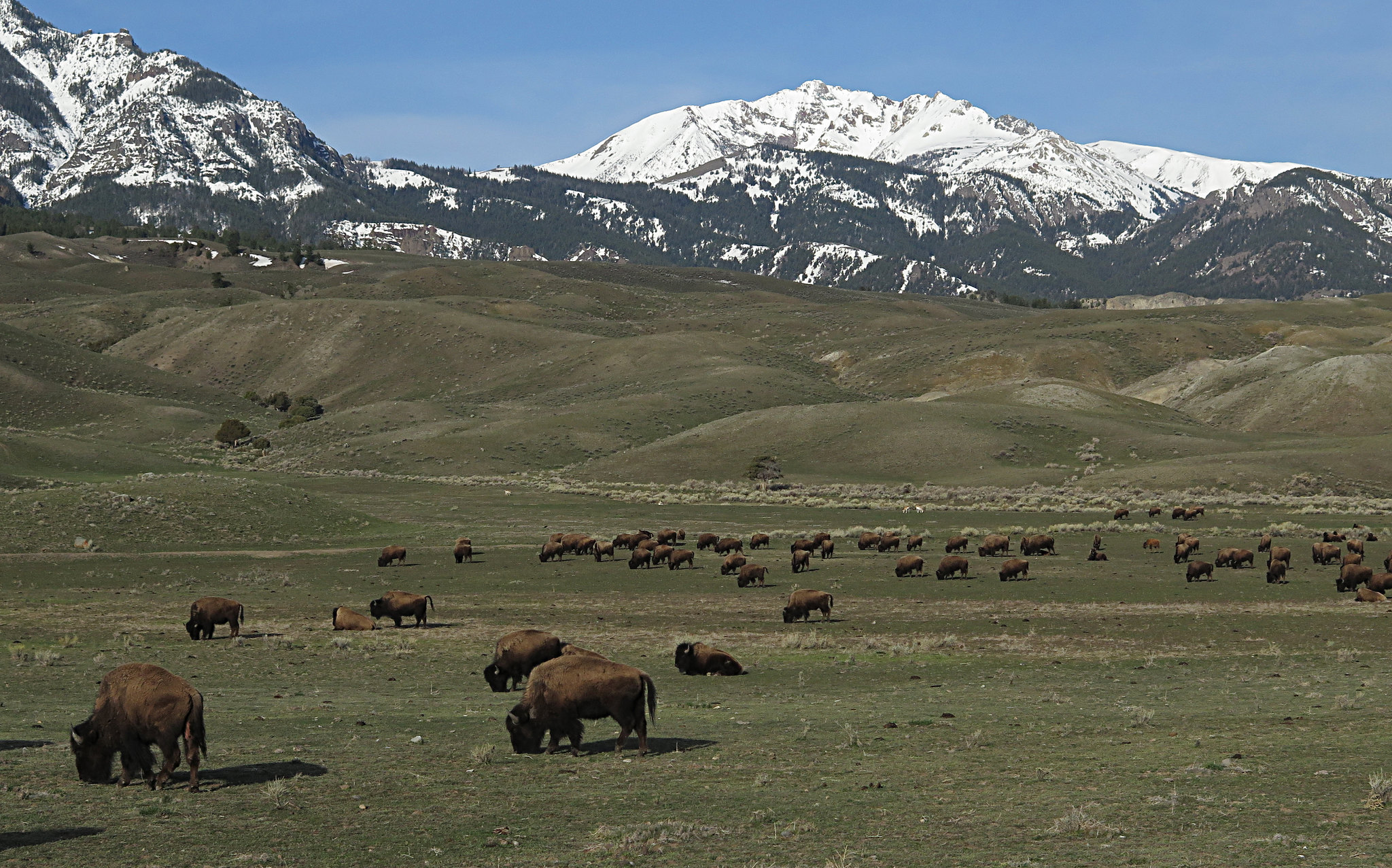Uncategorized
Recreationists cautioned to balance use with conservation
Published
5 years agoon
Posted By
Outlaw Partners

By Bella Butler EBS EDITORIAL ASSISTANT
BIG SKY – In many ways, Montana may be considered the flagship for wild places in the United States. With just over a million people spread out across nearly 150,000 square miles, there is a bountiful offering of wide-open spaces with exceptional access to entertain sportsmen and women of all kinds.
In Gov. Steve Bullock’s second campaign, he made it a priority to protect the land privileges enjoyed by recreationists in Montana, running largely on a public lands platform. When in office, he followed through on the promise and established the Montana Office of Outdoor Recreation, making Montana the fourth state to establish such an office.
Based in the Montana Governor’s Office for Economic Development, MTOOR is a one-employee operation run by director Rachel VandeVoort, a native Montanan who grew up in Whitefish and graduated from the University of Montana.
Each state’s office of outdoor recreation hones their focus on priorities and missions that satisfy their state’s unique needs. For Montana, that looks like fostering continued growth for outdoor recreation, which VandeVoort says is an essential and critical segment of not only the Montana lifestyle, with over 80 percent of Montanans participating in outdoor recreation, but also its economy.
“[The] outdoor recreation economy is a significant contributor [to Montana’s economy overall],” VandeVoort said. Citing figures from the 2018 MTOOR Economy Report, she noted that 10 percent of all Montana jobs are directly related to outdoor recreation. The report also concluded that the outdoor recreation industry accrues $7.1 billion dollars in consumer spending and generates $286 million in state and local taxes.
Looking through an economic lens, growing the industry can only mean a stronger state economy, which in turn translates to higher standards of living for Montanans and more opportunities for prosperity within the state.
However, increased recreation in fragile natural climates may seem like a “Catch 22.” As the economy trends upward with the growth of the industry, the health of Montana’s environment could potentially see a reversed outcome. As VandeVoort pointed out, there is no such thing as a type of recreation that has no impact.
As the outdoor recreation industry expands and consequently so do the repercussions to the environment, a divide has surfaced between conservationists—those looking to preserve the land—and recreationists who prioritize heavy use.
In an essay published by “High Country News,” Ethan Linck writes the narrative of this rift, claiming that blurring the lines between recreationist and conservationist is misguided. He poses this question: “Can outdoor recreation really support conservation for the long-term health of the land, not just human access?”
Linck’s argument is that the conservation that recreationists believe they are participating in is actually born out of self-interest; people will fight to protect something if they have a vested stake in it. To Linck, this is what distinguishes a recreationist from a conservationist, the latter being someone who he believes views the environment with the absence of anthropocentric perspective and honors the intrinsic value in nature.
Randy Carpenter, project manager for the nonprofit organization Future West, hopes attitudes will shift toward thinking about what is best for nature.
“As our population grows … as we see more and more impacts, I hope that people will start to look at the intrinsic value of our wild lands and see that value alone as meaningful,” he said.
VandeVoort does agree that participating in outdoor activities does not inherently make you a conservationist of that place solely based on that interaction with nature. Despite recognizing the partition between the two acts, she also suggests that in our current world, conservation and recreation cannot exist exclusively from each other.
“[Conservation] takes time and energy and effort and money to maintain,” VandeVoort said.
According to the MTOOR director, the outdoor recreation industry has the resources to support conservation efforts in a way that otherwise wouldn’t be possible; a portion of MTOOR is improving outdoor recreation infrastructure and access with a focus on stewardship and conservation. She also believes that allowing people the opportunity to experience the outdoors instills in them a passion for those outside spaces and a desire to protect them. This concept is often known as “place attachment” and has been debated as a sound theory by many.
With outdoor recreation playing such a large role in Montana’s culture and livelihood, it will not likely dissolve from the region anytime soon. However, in order to meet environmental needs spurring from rapidly increasing use by recreationists, the Montana outdoor recreation industry and those that it serves may need to “practice restraint,” as said by Carpenter.
The question remains as to what these restraints look like and how large of a push they must be. Carpenter pointed out that there are a great deal of impacts by recreationists that have yet to come to light, so determining solutions is an especially challenging feat.
An example VandeVoort offered up is the Smith River permit system, which limits the number of floaters allowed on the prized Smith River in the central part of the state.
The solution to growing the outdoor recreation industry responsibly is thus far inconclusive, but VandeVoort and Carpenter both believe it must include a balance of respecting conservation efforts and honoring the role that outdoor recreation plays in Montana.
The Outlaw Partners is a creative marketing, media and events company based in Big Sky, Montana.


Upcoming Events
april, 2024
Event Type :
All
All
Arts
Education
Music
Other
Sports
Event Details
Children turning 5 on or before 9/10/2024:
more
Event Details
Children turning 5 on or before
9/10/2024: Kindergarten
enrollment for the 2024-2025 school year can be completed by following the
registration process now.
Children
born on or after September 11, 2019: 4K enrollment is now open for
families that have a 4-year-old they would like to enroll in our program for
the 2023-2024 school year. Please complete the 4K Interest Form to
express your interest. Completing this form does not guarantee enrollment into
the 4K program. Enrollment is capped at twenty 4-year-olds currently
residing within Big Sky School District boundary full time and will be
determined by birth date in calendar order of those born on or after September
11, 2018. Interest form closes on May 30th.
Enrollment now is critical for fall preparations. Thank you!
Time
February 26 (Monday) - April 21 (Sunday)
Event Details
Saturday, March 23rd 6:00-8:00pm We will combine the heart-opening powers of cacao with the transcendental powers of breathwork and sound. Together, these practices will give us the opportunity for a deep
more
Event Details
Saturday, March 23rd 6:00-8:00pm
Time
March 23 (Saturday) 6:00 pm - April 23 (Tuesday) 8:00 pm
Location
Santosha Wellness Center
169 Snowy Mountain Circle
Event Details
We all are familiar with using a limited palette, but do you use one? Do you know how to use a
more
Event Details
We all are familiar with using a limited palette, but do you use one? Do you know how to use a limited palette to create different color combinations? Are you tired of carrying around 15-20 different tubes when you paint plein air? Have you ever wanted to create a certain “mood” in a painting but failed? Do you create a lot of mud? Do you struggle to achieve color harmony? All these problems are addressed in John’s workbook in clear and concise language!
Based on the bestselling “Limited Palatte, Unlimited Color” workbook written by John Pototschnik, the workshop is run by Maggie Shane and Annie McCoy, accomplished landscape (acrylic) and plein air (oil) artists,exhibitors at the Big Sky Artists’ Studio & Gallery and members of the Big Sky Artists Collective.
Each student will receive a copy of “Limited Palette, Unlimited Color” to keep and take home to continue your limited palette journey. We will show you how to use the color wheel and mix your own clean mixtures to successfully create a mood for your paintings.
Each day, we will create a different limited palette color chart and paint a version of a simple landscape using John’s directives. You will then be able to go home and paint more schemes using the book for guidance.
Workshop is open to painters (oil or acrylic) of any level although students must have some basic knowledge of the medium he or she uses. Students will be provided the book ($92 value), color wheel, value scale and canvas papers to complete the daily exercises.
Sundays, April 14, 21 and 28, 2024
Noon until 6PM.
$170.
Time
14 (Sunday) 12:00 pm - 28 (Sunday) 6:00 pm
Event Details
Everyone is invited to join us in celebrating 2 years of arts education in the BASE Art Studio with us! Take a tour
Event Details
Everyone is invited to join us in celebrating 2 years of arts education in the BASE Art Studio with us! Take a tour of the studio, meet our instructors, and meet other artists of all levels in our community. We’ll be getting creative and you’ll have the chance to make your very own artful button pin.
Stick around for our Volunteer Appreciation and Social beginning at 6:30 p.m.!
Time
(Thursday) 5:30 pm - 6:30 pm
Location
BASE
285 Simkins Dr










